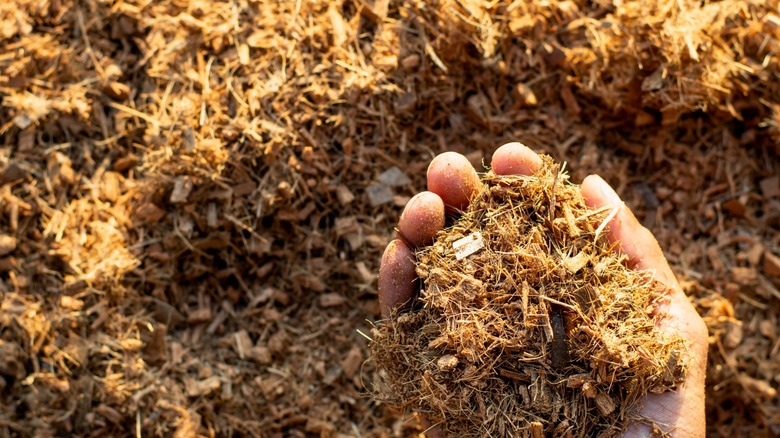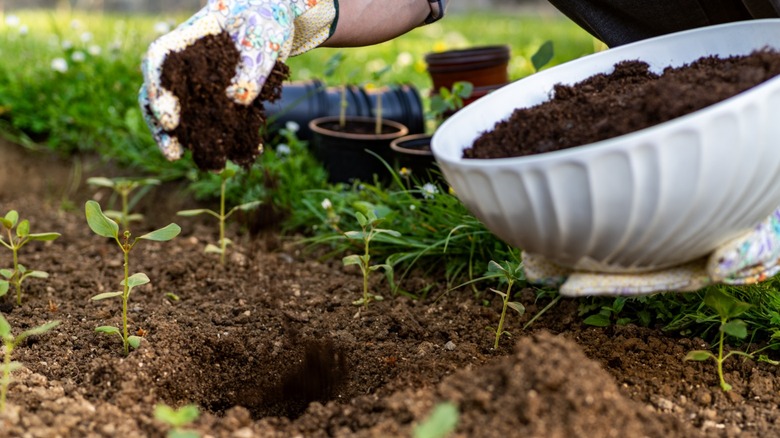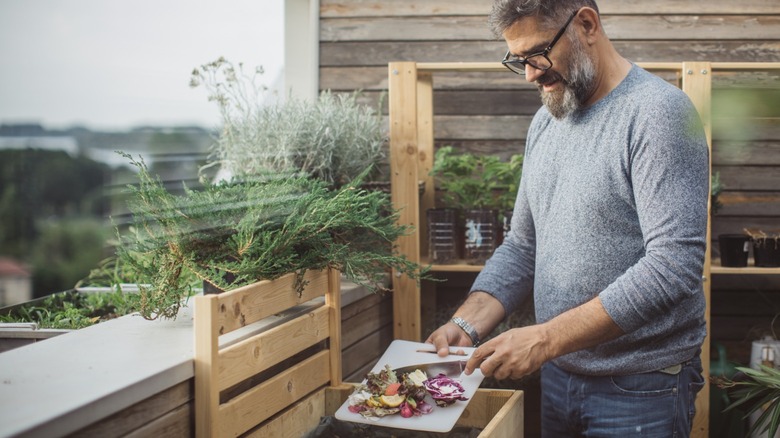The Hidden Drawbacks Of Using Coconut Coir In The Garden
The biggest gardening trends popping up everywhere post-pandemic show that people are finally paying attention to the planet. Homeowners are not afraid to embrace new ideas that make sense for improving the environment. From starting organic gardens to ditching the grass and planting native landscapes, people are interested in doing their part to help the environment. One of the latest popular growing mediums and alternatives to peat moss is coconut coir. However, some people choose to stay away from this medium, mainly due to the lack of nutrients, as well as the potential for binding up other nutrients. It can also contain a high amount of salt.
Prior to the recent movement towards eco-friendly habits, peat moss has been a common staple for growers everywhere. However, peat moss has been found to be bad for the environment and not sustainable in the long run, leaving gardeners no choice but to seek out alternatives. Coconut coir has recently been climbing its way up the ladder to earn the top position of preference. But before you run out and buy some, there are some hidden drawbacks of using coconut coir that you should know.
The hidden drawbacks of coconut coir
Coconut coir can have a lot of salt in it, which can certainly be a problem. During the harvesting process, the coir is often rinsed in saltwater instead of in freshwater. To be safe, you should always thoroughly rinse and drain coconut coir yourself before using it. The reason this can be a problem is because if the medium you're growing in is too saline it will inhibit the plant's uptake of water and nutrients.
Speaking of nutrients, if you want your growing medium to provide some fertilizer as well, you'll need to add it yourself. Coconut coir is inert, meaning it has no nutrients. So, certain nutrients may need to be supplemented, especially due to the fact that coconut coir holds onto calcium, iron, and magnesium. The coir chemically binds to those nutrients and won't release them due to its high cation exchange rate.
You'll also want to pay close attention to the label, as some coconut coir bales are treated with chemicals for pathogens. If you're growing organically, this will be something important to check into. It can also be hard to find coconut coir from a reliable source, so you may need to have it shipped to you.
What to use instead of coconut coir
Naturally, you may be wondering what to use as a good alternative to coconut coir and peat moss. One idea is pine needles, if you happen to have an abundance of those lying around, pick them up and utilize them in your garden in place of coconut coir or peat moss. However, these are best used as a topsoil additive or mulch, and won't help absorb or retain moisture. Another terrific and sustainable idea is rice hulls. They lighten the soil, aid in the absorption of moisture, improve drainage, and feed the soil as they break down. For potting soil, add 10% to 50% rice hulls, or mix the hulls into the top 6 to 12 inches of garden soil.
Arguably the best alternative for coconut coir is making your own compost, and more and more people are realizing the benefits. As we make the necessary shift toward a healthier and more natural way of living, composting is the next step in organic growing and gardening. Nothing is more healthy and nutritious for your plants than compost, and it's simple to DIY. Making better, more educated decisions about what we use in the garden is one of the first steps towards reducing our carbon footprint overall.


